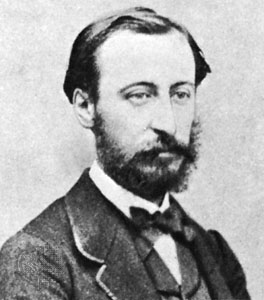Related Research Articles

Walter Hamor Piston, Jr., was an American composer of classical music, music theorist, and professor of music at Harvard University.

The Symphony No. 2 in D major, Op. 36, is a symphony in four movements written by Ludwig van Beethoven between 1801 and 1802. The work is dedicated to Karl Alois, Prince Lichnowsky.

The Piano Concerto No. 4 in C minor, Op. 44 was composed by Camille Saint-Saëns in 1875. It was premièred on October 31, 1875, at the Théâtre du Châtelet of Paris, with the composer as the soloist. The concerto is dedicated to Anton Door, a professor of piano at the Vienna Conservatory. It continues to be one of Saint-Saëns' most popular piano concertos, second only to the Piano Concerto No. 2 in G minor.
Harold Shapero completed the Symphony for Classical Orchestra in B-flat major on March 10, 1947, in Newton Centre, Massachusetts. It is written for an orchestra consisting of piccolo, 2 flutes, 2 oboes, 2 clarinets in B-flat, 2 bassoons, contrabassoon, 2 horns in F, 2 trumpets in C, 2 tenor trombones and one bass, timpani and strings. Although labelled "Classical," many of the work's features point to Beethoven rather than Haydn or Mozart, such as "the way in which Shapero paces himself, alternating long passages in the tonic and the dominant, with fast, dramatic modulations often reserved for transitions and developments." Nicolas Slonimsky remarked on how the piece is "premeditatedly cast in the proclamatory key of B-flat major, the natural tonality of the bugle, and ending in a display of tonic major triads." But there are modern features as well, with "the work's orchestration, in general, ... distinctively bright and brassy, and undoubtedly derived a fair amount from Piston and Copland, as well as from the composer's experience as a dance band arranger."
Symphony No. 2 by Walter Piston is a symphony composed in 1943.
The Symphony No. 5 by Walter Piston was composed in 1954.
The Symphony No. 7 by Walter Piston is a symphony dating from 1960.
The Symphony No. 8 by Walter Piston is a symphony dating from 1965.
The Symphony No. 3 by Walter Piston was composed in 1946–47.
The Symphony No. 1 by Walter Piston was completed in 1937.
Three New England Sketches by Walter Piston is a symphonic suite dating from 1959.
Walter Piston's Serenata for Orchestra is an orchestral suite or miniature symphony written in 1956.
The Sonatina for Violin and Harpsichord is a three-movement, neoclassical chamber work composed by Walter Piston in 1945, that marks the beginning of his postwar style.
Walter Piston's Fantasia for Violin and Orchestra was commissioned in 1970 by Mario di Bonaventura, music director of the Hopkins Center Congregation of the Arts at Dartmouth College, who conducted the world premiere on March 11, 1973, performed by the Dartmouth Symphony Orchestra with Salvatore Accardo as the soloist. The commission had been made specifically for Accardo.
String Quartet No. 1 by Walter Piston is a chamber-music work composed in 1933.
String Quartet No. 2 by Walter Piston is a chamber-music work composed in 1935.
String Quartet No. 3 by Walter Piston is a chamber-music work composed in 1947.
String Quartet No. 4 by Walter Piston is a chamber-music work composed in 1951.
String Quartet No. 5 by Walter Piston is a chamber-music work composed in 1962.
Felix Mendelssohn wrote thirteen string symphonies between 1821 and 1823, when he was between 12 and 14 years old.. These symphonies were tributes to classical period symphonies especially by Joseph Haydn, Wolfgang Amadeus Mozart and others.
References
- ↑ Howard Pollack, Walter Piston, Studies in Musicology (Ann Arbor: UMI Research Press, 1982): 117. ISBN 0-8357-1280-X.
- ↑ Howard Pollack, Walter Piston, Studies in Musicology (Ann Arbor: UMI Research Press, 1982): 118–19. ISBN 0-8357-1280-X.
- ↑ Larry Starr, "Tonal Traditions in Art Music from 1920 to 1960", in The Cambridge Guide to American Music, edited by David Nicholls, 471–95 (Cambridge and New York: Cambridge University Press, 1998): 492. ISBN 0-521-45429-8
- ↑ Howard Pollack, Walter Piston, Studies in Musicology (Ann Arbor: UMI Research Press, 1982): 118. ISBN 0-8357-1280-X.
- ↑ Bruce Archibald, liner notes, Walter Piston: Symphony No. 6; Leon Kirchner: Piano Concerto No. 1, Boston Symphony Orchestra, Charles Munch, conductor; Leon Kirchner, piano, New York Philharmonic, Dimitri Mitropoulos, conductor. Recorded Anthology of American Music. LP recording. New World NW 286. (New York: New World Records, 1977)
- ↑ Robert Evett, "Review: Walter Piston: Symphony No. 6. New York: Associated Music Publishers, 1957; Roy Harris: Symphony No. 7. New York: Associated Music Publishers, 1956." Notes, second series, 15, no. 1 (December 1957): 146.
- ↑ Howard Pollack, Walter Piston, Studies in Musicology (Ann Arbor: UMI Research Press, 1982): 118. ISBN 0-8357-1280-X.